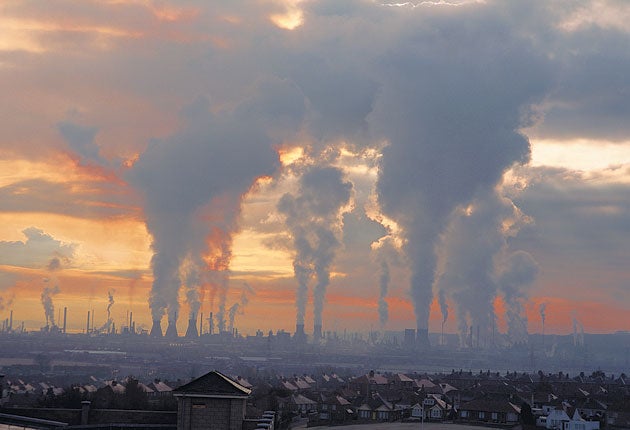Carbon dioxide in atmosphere at highest level for 5 million years
Atmosphere rising at fastest rate since records began

The concentration of carbon dioxide in the atmosphere has breached the symbolically important level of 400 parts per million (ppm) for the first time in 5 million years after rising at its fastest rate since records began.
Average daily CO2 levels jumped by 2.74 ppm in the first 17 weeks of 2013, compared to last year, the biggest increase since the benchmark monitoring stations high on the Hawaiian volcano of Mauna Loa began taking measurements in 1958.
Experts blamed most of the increase on rising emissions from China and India, which still rely heavily on coal for their energy, but said other factors could also be partially responsible, such as a reduced absorption of CO2 by forests and plants.
Registering a huge landmark on the climate change map – albeit a predictable and inevitable one – the monitoring stations recorded a CO2 concentration of 400.03 ppm on Thursday.
The elevated carbon emission reading harks back to the Pliocene period, between 3m and 5m years ago, when global average temperatures were 3 or 4C hotter than today, the Arctic was ice-free, sea levels were about 40m higher and jungles covered northern Canada.
It fuelled fears that CO2 emissions – widely, although not exclusively, regarded as being at least partially responsible for the sustained rise in temperature since the Industrial Revolution – were increasing at a faster rate than previously thought, with potentially disastrous consequences across the world.
Ed Davey, Energy and Climate Change Secretary, said: “This isn’t just a symbolic milestone, it’s yet another piece of clear scientific evidence of the effect human activity is having on our planet.”
He added that the development further underlined the need to decarbonise the UK economy and secure the legally binding deal that the world’s leading economies have agreed to finalise by 2015.
Al Gore added: “Take this day and the milestone it represents to reflect on the fragility of our civilisation and the planetary ecosystem on which it depends.”
Jon Sauven, executive director of Greenpeace UK, said: “This is a landmark moment for humankind, a milestone every bit as important as when the global population passed six then seven billion.”
The Hawaiian monitoring stations are run by the US National Oceanic and Atmospheric Administration and the Scripps Institution of Oceanography. They have been the benchmark since 1958 because Hawaii is so far from large population centres.
The first reading, made in March 1958, was 315ppm. In the early 1960s the CO2 emissions reading was going up at a rate of 0.7ppm a year, but the increase has since accelerated to 2.1ppm.
The concentration of CO2 typically peaks in May, before falling until October, as plant growth in the northern hemisphere’s summer absorbs the gas, and then goes up again during winter and spring.
Experts said it could take hundreds of years for the full effect of the higher CO2 concentration to be felt, for example by gradually changing ecosystem through the melting of ice caps in Antartica and Greenland.
Subscribe to Independent Premium to bookmark this article
Want to bookmark your favourite articles and stories to read or reference later? Start your Independent Premium subscription today.

Join our commenting forum
Join thought-provoking conversations, follow other Independent readers and see their replies